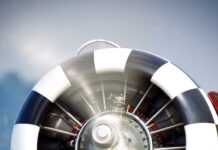For most performers, an aerobatic sequence is a perpetual work in progress. As we develop our skills and learn new maneuvers, we want to add them to our show routine. This is a natural progression, as most all performers feel the need to freshen and upgrade their acts in order to assure return appearances. It is also natural to always be striving to learn or invent new, eye-catching maneuvers.
When a new maneuver is introduced into a sequence, it can influence the dynamics of the entire sequence. The first consideration is how much energy does the new figure need going in and, secondly, how much energy does it consume. Is it an energy gainer, a loser or does it break even? Replacing an old maneuver with a new one with the same energy requirements is always convenient, but rarely fits in as well in the air as it did on the kitchen table.
Performer veterans will often tell a newcomer that a new maneuver should not be added to an air show sequence until it can be performed predictably a hundred times out of a hundred attempts at altitude. But there are few things — other than blinking — for which we can hope to achieve that degree of certainty, so those same veterans will encourage you to add a little cushion.
For instance, if a performer were considering the addition of a series of snap rolls on a 45 degree down line at the center of the aerobatic box, it’s important to set a hard deck (at least 1,000 feet) during practice and experiment. Perform the series of snaps at altitude, paying close attention to entry speed, the angle at which the maneuver is entered, and the number of vertical feet of altitude that are consumed by one, two or three snap rolls. Using a 1,000′ hard deck, you should have your rotation stopped by 1,500’, allowing you to use some part of the remaining 500′ to gain energy for your next figure. In addition to helping to set up your next maneuver, this also builds margin of error into the maneuver that could provide much needed cushion in some cases. (And, if you think 500′ is too much cushion, double check your rate of descent and convert to seconds.) Once you’ve worked all of this out at altitude, you can begin moving the maneuver down to more air show-type altitudes, always being careful to maintain that 500 foot cushion.
And, as you integrate this type of new maneuver into your sequence in this fashion, you’ll be familiar enough to know when circumstances dictate a change in plan. As an example: many performers find that a true 45 degree down line is unnecessarily steep. Something closer to 30 or 35 degrees will provide more flexibility and more room to complete the rolls.








